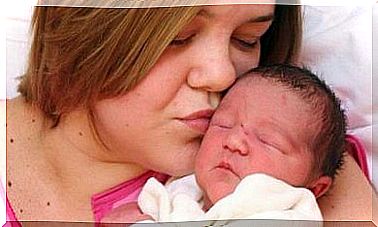Postpartum OCD

Below we explain what OCD is and how it can be overcome.
Postpartum OCD, as its name indicates, is a set of thoughts and behaviors that occur in a woman once she has given birth.
As in any other OCD (Obsessive Compulsive Disorder), a woman’s life is affected daily, in many areas.
Causes of postpartum OCD
There is no consensus on the causes that give rise to postpartum OCD, however some specialists think that the hormonal and physical changes that take place after childbirth could favor its onset.
Like many other disorders, the causes of postpartum OCD are thought to be a combination of environmental, genetic and biological factors. In addition, certain factors are suspected that predispose individuals to develop postpartum OCD.

Risk factors
- Familiarity for DOC.
- Mood disorders: stress, anxiety, depression, etc.
- Traumatic or highly stressful events.
- Difficulty in delivery and lack of post-partum rest.
Incidence of post-partum OCD
It is estimated that about 3% of first-time women develop OCD. On the other hand, those who have previously been diagnosed with anxiety or depression are prone to develop it.
Typically, women who experience postpartum OCD tend to confuse it with postpartum depression. This is why it is often ignored and, consequently, it is not possible to precisely quantify the frequency of its appearance.
It should be noted that not all cases of postpartum OCD are the same. In some women it may present itself in a mild form and, in others, it may manifest itself in a much more extreme way.
Prevention
There is still no known way to prevent post-partum OCD, but, without a doubt, a healthy lifestyle and good personal care (especially mental) can be significantly helpful to the woman.
Once you have been diagnosed with postpartum OCD by a professional, it is important to follow their directions. In this way the treatment can have satisfactory results and lead to rapid improvement.
Signs of postpartum OCD
All worries that involve caring for the newborn are taken to the extreme. As a result, exaggerated behaviors of overprotection and excess cleaning, among others, develop.
- Insomnia.
- Lack of rest (to take care of the baby).
- Exaggerated overprotection. For example, the woman may carry the baby in her arms constantly for fear that something might happen to him.
- Repetitive rituals and behaviors, such as: checking the contents of the wallet at all times, sterilizing the bottle more times than necessary, cleaning the same rooms or places several times.
- Accumulate things. This gives the mother a feeling of tranquility, knowing that she will not lose her belongings or that she will always have what she needs.
- Perfectionism. Constant anguish at the thought that if you do not do everything perfectly you can harm the baby.
- Avoidance behaviors (in order not to harm the child): no knives or sharp objects are taken, one stops using certain products for fear of their toxicity, etc.
The presence of these signs can cause a decline in a woman’s quality of life. His routine is worsened by actions he carries out to counter him and his intrapersonal relationships are seriously affected.

Treatment of postpartum OCD
The support of loved ones is a key point when finding a solution. Equally, it is very helpful for the woman to be able to delegate some of the responsibilities so that she can get distracted and break the routine. This can start small.
For example, if you can count on the help of the baby’s grandmother, the woman can take a nap quietly because there will be someone responsible and capable of looking after the baby.
It is certainly not easy for the woman with post-partum OCD to detach herself from the baby, so you have to be patient but firm. Only in this way will we be able to help her.
The help of a professional psychologist can help you to overcome postpartum OCD gradually. Therefore, once therapy is initiated, it is important to be consistent and consistent when applying recommendations and directions.









